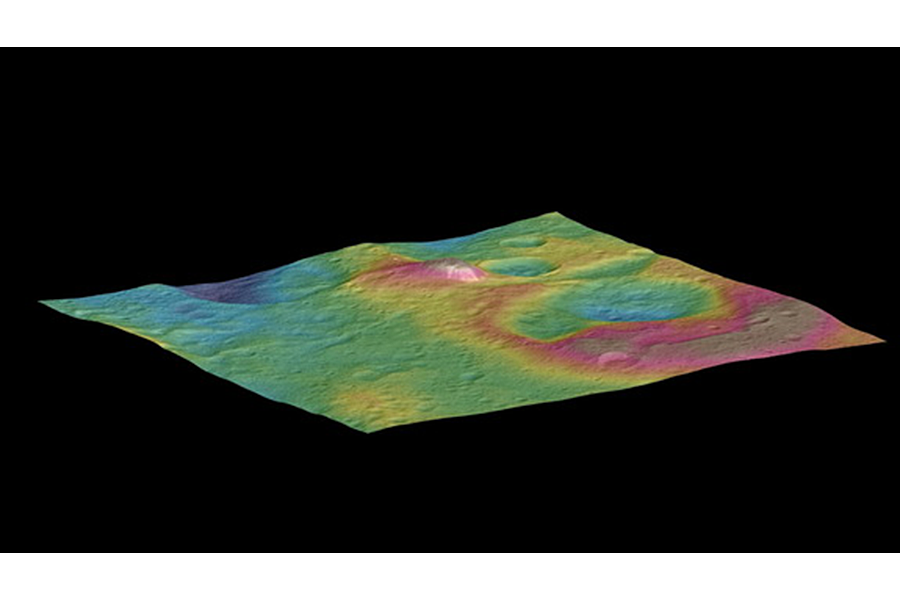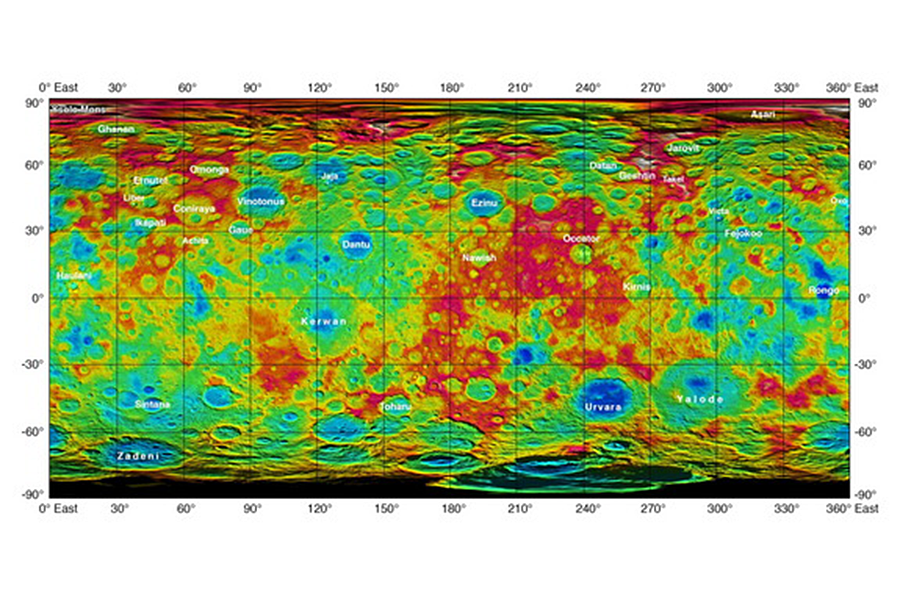Irridescent map of Ceres: See a tantalizing view of dwarf planet
Loading...
New topographic maps of Ceres reveal the geological wonders of the dwarf planet, located in the asteroid belt between Jupiter and Mars.
Thanks to NASA's Dawn spacecraft, which has been orbiting the cratered planet at an altitude of 915 miles, scientists now have fascinating images that showcase the elevation and compositional differences across Ceres.
For instance, one view shows the color-coded topographic image of Occator, a 56-mile-wide crater, home of Ceres' mysterious bright spots. Another map highlights the pyramid mountain that rises four miles high. These new visual data are keeping scientists busy in trying to understand the processes that could produce such enticing Cerean landscape.
The new map also feature more than a dozen names for Ceres’ terrain recently approved by the International Astronomical Union. The new names such as Ysolo Mons for a 12-mile wide mountain near Ceres' north pole are all eponymous for agricultural spirits and deities from cultures all over the world.
"The irregular shapes of craters on Ceres are especially interesting, resembling craters we see on Saturn's icy moon Rhea," Carol Raymond, Dawn's deputy principal investigator based at NASA's Jet Propulsion Laboratory, said in a statement. "They are very different from the bowl-shaped craters on Vesta."
Another interesting phenomenon came from Dawn’s gamma ray and neutron spectrometer, which detected three bursts of energetic electrons that may have been caused by interaction between Ceres and radiation from the sun.
NASA officials say they don’t fully understand the observation, but it may be vital in forming a complete picture of Ceres.
After about six months of orbiting the tiny planet, Dawn will descend to its lowest and final orbit starting in October. There, the spacecraft will continue its observations. At an altitude of only 230 miles, the imaging resolutions will be higher than ever before.
Dawn is the first probe ever to orbit a dwarf planet, and the first to circle two different extraterrestrial objects. In 2011 and 2012, the spacecraft orbited Vesta, another dwarf planet on the asteroid belt.







